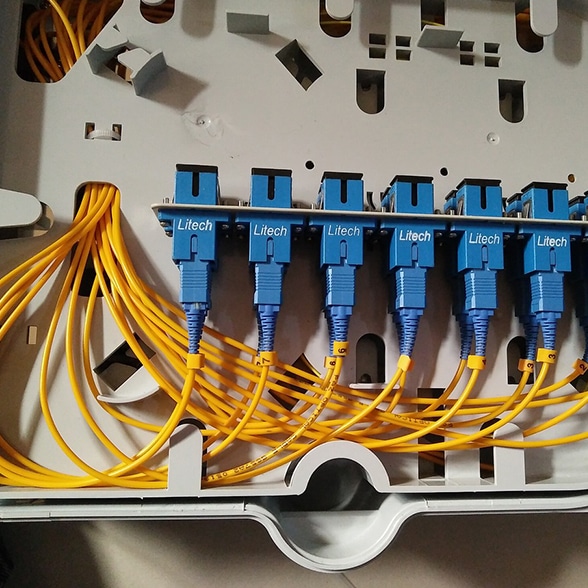Manufacturing, distribution and other delays have hit nearly every industry over the last two years and continue to plague us. Fiber optic equipment and supplies are no exception – and those delays are likely to be exacerbated as unprecedented funding becomes available for fiber deployments.
Recognizing this, the Fiber Broadband Association has put together a 24-page white paper titled “Strategies to Mitigate Bottlenecks in the Current Fiber Broadband Supply Chain.”
The white paper is worth checking out, as it has a range of good ideas gathered from conversations with suppliers and network operators.
Fiber Optic Supply Chain Delays
Average supply chain lead times by type of product are as follows, according to the report:
- Fiber optic cable: 52-60 weeks
- Fiber cabinets and splitters: 10-20 weeks
- Fiber multipoint terminals: 35-48 weeks
- Conduit: 15-20 weeks
- Hand holes: 22-26 weeks
- Home equipment: 3-6 months
The report recommends nine mitigation strategies, including:
- Relationship Building and Communication. One suggestion here is to include representatives from a wider range of departments within a company in meetings so problems can be averted as early as possible.
- Capacity Build-out and Nearshoring. Some manufacturers are building out production capacity in the U.S. or in areas close to the U.S. For example, Corning is building a major new facility in Arizona.
- High-level Design and Product Substitution. Networks should be designed earlier in the buildout process so that purchases can be made as early as possible. Identifying possible product substitutions is also key.
- Training Programs. Equipment is not useful if there are not enough people trained to install it. FBA forecasts an upcoming 850,000-person tech shortage in the industry and has developed a training program aimed at addressing it. Other training programs also are becoming available or are in development.
- Supplier Diversification. Having more than one possible source for any type of equipment can help avoid bottlenecks.
- Scheduling Management and Forecasting. As one network operator noted, it was commonplace in the past for providers to plan for the upcoming year during the second or third quarter. But now the company plans 24 to 36 months in advance.
- Smarter Technology. Some suppliers are adopting artificial intelligence to help in forecasting supply and demand. For example, Graybar Electric uses software that can use the amounts needed to calculate multi-manufacturer lead times to help ensure that deliveries occur in advance of when they are needed.
- A Move Away from “Just in Time” and Increasing Storage Options. “Just in time” was a buzzword 30 years ago and was viewed as a way of saving costs. But some of FBA’s sources say it’s out of favor and unlikely to regain its previous status. Companies now order more equipment in advance of when they need it and are expanding warehousing or arranging with distributors to store it where needed.
